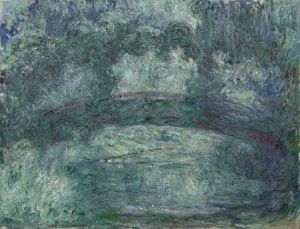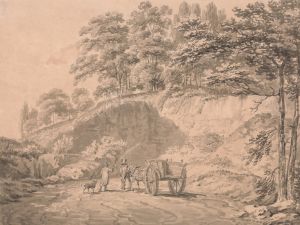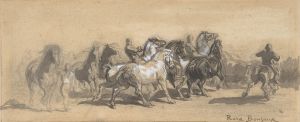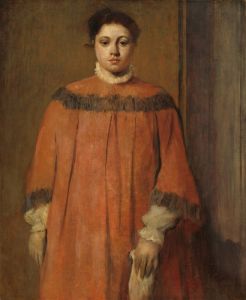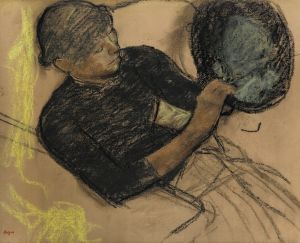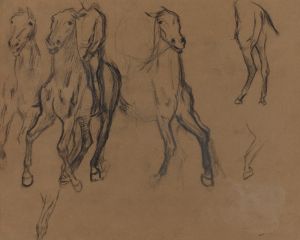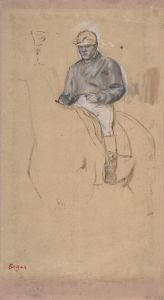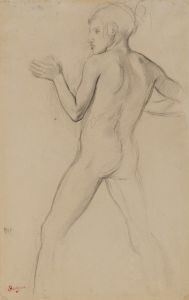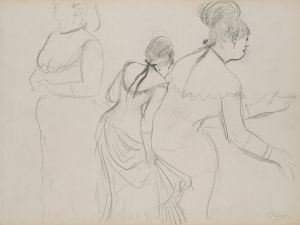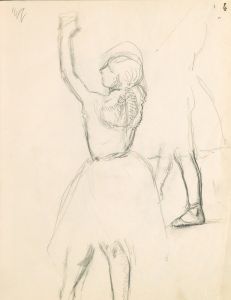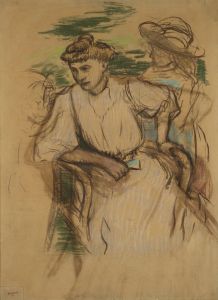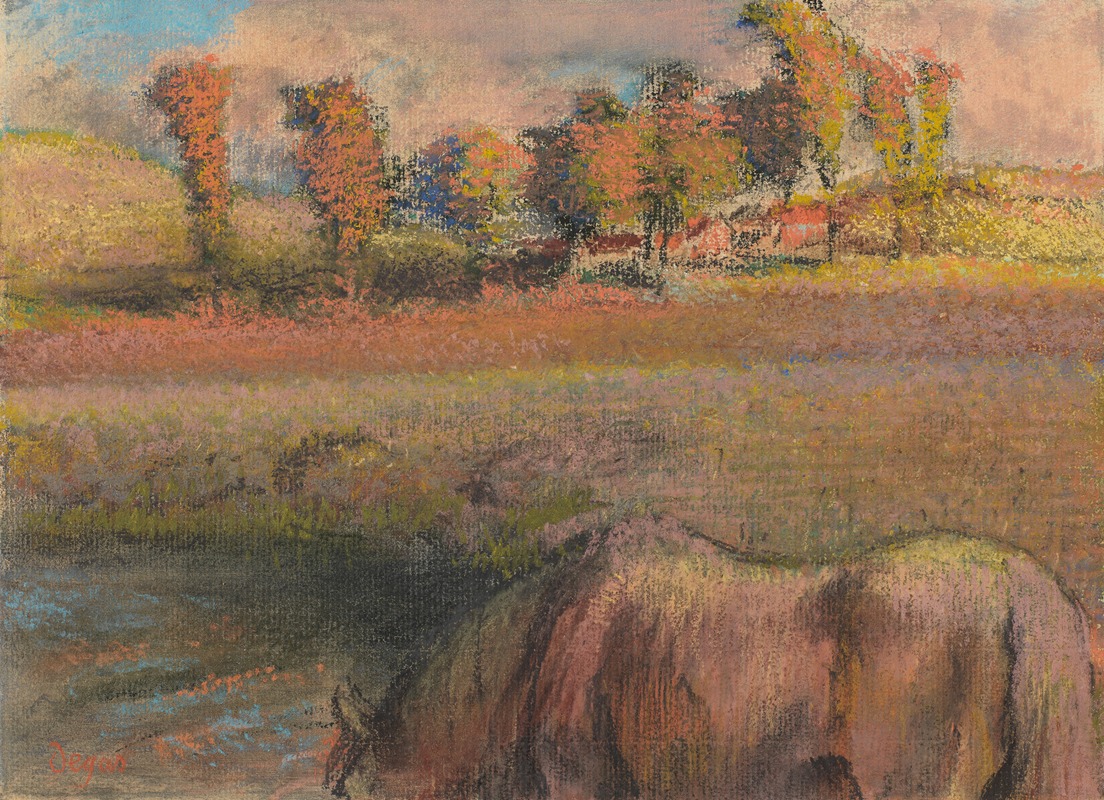
Cheval au bord de la mare
A hand-painted replica of Edgar Degas’s masterpiece Cheval au bord de la mare, meticulously crafted by professional artists to capture the true essence of the original. Each piece is created with museum-quality canvas and rare mineral pigments, carefully painted by experienced artists with delicate brushstrokes and rich, layered colors to perfectly recreate the texture of the original artwork. Unlike machine-printed reproductions, this hand-painted version brings the painting to life, infused with the artist’s emotions and skill in every stroke. Whether for personal collection or home decoration, it instantly elevates the artistic atmosphere of any space.
Edgar Degas, a prominent French artist known for his contributions to Impressionism, created the artwork "Cheval au bord de la mare" (Horse by the Water) during his prolific career. Degas, whose full name was Hilaire-Germain-Edgar De Gas, was born on July 19, 1834, in Paris, France, and became renowned for his mastery in capturing movement, particularly in his depictions of dancers, horse races, and everyday scenes.
"Cheval au bord de la mare" is one of Degas's many works that reflect his fascination with horses and equestrian subjects. While Degas is often associated with the Impressionist movement, he preferred to be regarded as a realist, focusing on the precision of form and the dynamics of movement. His interest in horses was part of a broader exploration of motion, which he pursued through various media, including painting, drawing, and sculpture.
The artwork "Cheval au bord de la mare" showcases Degas's skill in portraying animals with a sense of vitality and realism. Although specific details about the creation date and the medium of this particular piece are not widely documented, it is consistent with Degas's style of capturing the essence of his subjects through careful observation and a keen eye for detail. His equestrian works often depict horses in natural settings, emphasizing their grace and power.
Degas's technique involved a meticulous approach to composition and a deep understanding of anatomy, which allowed him to render horses with remarkable accuracy. His use of light and shadow, combined with a subtle color palette, adds depth and dimension to his works, drawing viewers into the scene. In "Cheval au bord de la mare," the horse is likely depicted in a tranquil setting by the water, a common theme in Degas's equestrian art, which often juxtaposes the strength of the animal with serene landscapes.
Throughout his career, Degas was influenced by classical art and the works of earlier masters, yet he continually sought to innovate and push the boundaries of traditional techniques. His equestrian paintings and drawings reflect this blend of classical influence and modern sensibility, capturing the dynamic energy of horses in motion while maintaining a sense of elegance and poise.
Degas's contributions to art extend beyond his equestrian subjects, as he is also celebrated for his depictions of ballet dancers, women at work, and scenes of Parisian life. His work has had a lasting impact on the art world, influencing generations of artists and shaping the development of modern art.
"Cheval au bord de la mare" exemplifies Degas's ability to convey the beauty and complexity of the natural world through his art. While specific exhibitions or collections featuring this piece may not be extensively documented, Degas's equestrian works continue to be admired for their technical brilliance and emotional resonance. His legacy as a master of movement and form endures, making him one of the most significant figures in the history of art.





